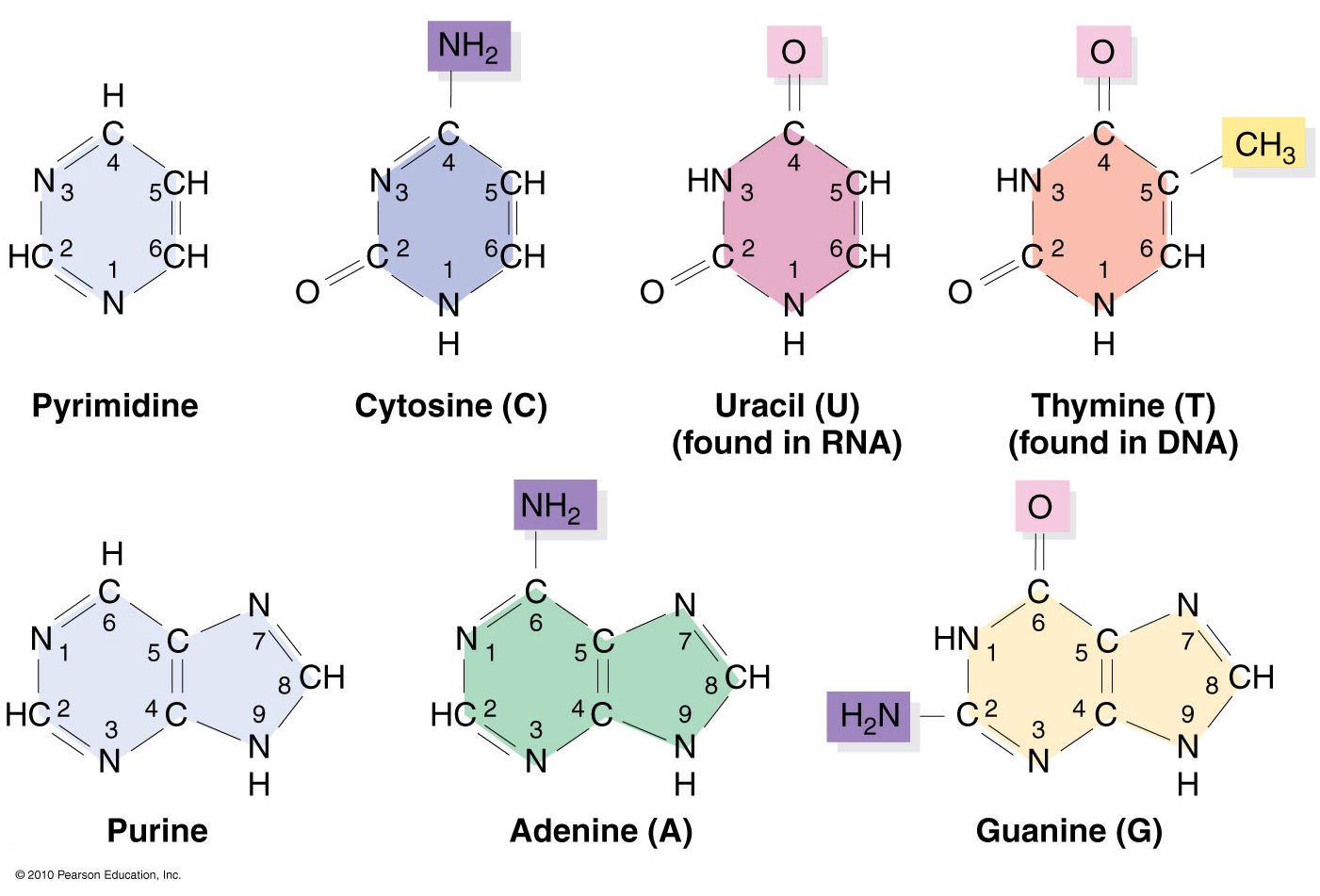

For convenience, the carbon atoms in a nucleotide's sugars are numbered beginning with the carbon atom bonded to the nitrogenous base, moving around the ring, and up to the carbon that is bonded to the phosphate group. Cytosine, thymine, and uracil each have a single ring, and these three bases are called pyrimidines. The nitrogenous bases guanine and adenine each have two linked rings of atoms.

Three of the four bases are the same in DNA and RNA- adenine, guanine, and cytosine. DNA and RNA are each composed of four different nucleotides, which differ in their nitrogenous bases. Ribose has one more oxygen atom than deoxyribose. DNA contains the sugar deoxyribose, while RNA contains the sugar ribose. One difference between DNA and RNA is the type of sugar their nucleotides contain. A DNA nucleotide is composed of a nitrogenous base, phosphate group, and a deoxyribose sugar. This is a close-up of one DNA nucleotide. DNA and RNA Structure DNA and RNA are nucleic acids, polymers made of subunits called nucleotides.


 0 kommentar(er)
0 kommentar(er)
